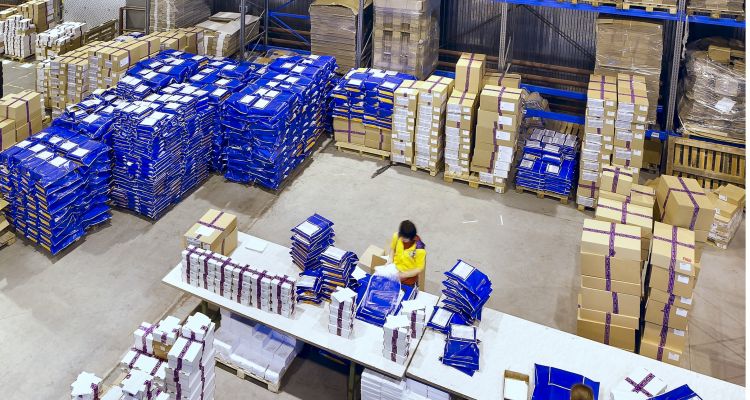News
MORE NEWS
3 Reasons to Up Your E-Commerce Game
6 July 2020

Shelter-in-place orders issued during the global Covid-19 pandemic have caused a major shift in consumer purchasing behavior: as hospitality/food service and brick-and-mortar retail sales came to standstill, online purchases surged. Although it remains to be seen what will happen post-Covid, we know for certain is that ecommerce is a channel all corporates should be closely looking at - here are 3 reasons why.
1. Step up now or sit and watch.
Even before the pandemic, ecommerce sales had been gaining a larger piece of the total retail spend year-over-year since 2010, hitting a high of 18% in 4Q 2019. For food and beverage purchases, 5.8% of consumers used D2C services in 2018, up from 1.4% in 2014 (Global Data).
The pandemic quickly accelerated ecommerce activity: In the UK, the proportion of online sales during the month of April soared to 30.7%, the highest on record. From March to April in the US, retail sales fell 16.4%, while online sales shot up 8.4% for a 21.2 % increase year-over-year.
While these gains may be temporary, there are indicators that many consumers may not return to their previous buying behaviors. In an annual user survey conducted by RBC, a whopping 54% of respondents said recent events would permanently increase their willingness to shop online.
Walmart’s recent decision to replace Jet.com (acquired by the company four years ago) with the Walmart brand for ecommerce reflects the company’s desire to build-out its D2C supply chain. Amazon continues to rapidly expand both its infrastructure and workforce.
It’s time to act quickly or risk watching from the sidelines as Amazon and Walmart dominate the ecommerce marketplace.
2. You’ll need time to develop your product offering.
CPGs need to offer consumers a compelling reason to buy direct from them when they are already utilizing multiple D2C avenues. Now’s the time to develop your value proposition for new and existing online products—and to consider omni-channel product development.
Product categories are ideally suited for ecommerce include:
- continually replenished items, such as water, pet food and coffee pods.
- items with strong product loyalty. Nike, which recently pulled its products from Amazon, is counting on its customer devotion to the brand to maintain its online sales on their own platform
- premium or unique products, such as craft brews and better-for-you foods and beverages, like Ocean Spray’s Atoka, a line of herbal tonics and shots.
Customization is another driver for D2C offerings. At the Coca-Cola Store, the company sells personalized bottles. PepsiCo bundles its products together in quantities high enough to offer free shipping to customers product at PantryShop.
The ecommerce marketplace is also cost-effective means of gaining proof-of-concept before scaling products regionally, nationally or globally. Learning first-hand what works and doesn’t in your online store is a great way to test new products and the effectiveness of product promotions.
3. Opportunities abound.
Despite the strength of the leading online retailers, the RBC survey revealed that customer satisfaction with Amazon, Walmart and eBay are at an all-time low (64, 70 and 60 percent respectively). Customer grievances including longer-than-expected delivery times and product outages mean there’s still plenty of opportunity for manufacturers and retails to establish their own D2C businesses.
CPGs with considerable resources and deep benches have been able to develop their own direct-to-customer (D2C) offerings, including PepsiCo and Kraft Heinz (with PantryShop/Snacks and Heinz to Home, respectively).
For smaller companies without the resources of a global company—and larger corporates without the bandwidth to tackle a new channel—a better approach is to select open source partners for co-manufacturing, warehousing, ordering and fulfillment.
There are literally are hundreds of sophisticated 3PL partners to choose from—and Pilot Lite has vetted these types of partners around the globe for more than 10 years. The choice of partners is paramount—the ordering and delivery processes must be efficient and friction-free; one weak link in the ecommerce chain could mean a loss of customers and hurting your brand.
business-readinesslaunchscale e-commerce food-bev market-expansion e-commerce commercialisation innovation scale launch business-readiness plv plv
-750x400.JPG)